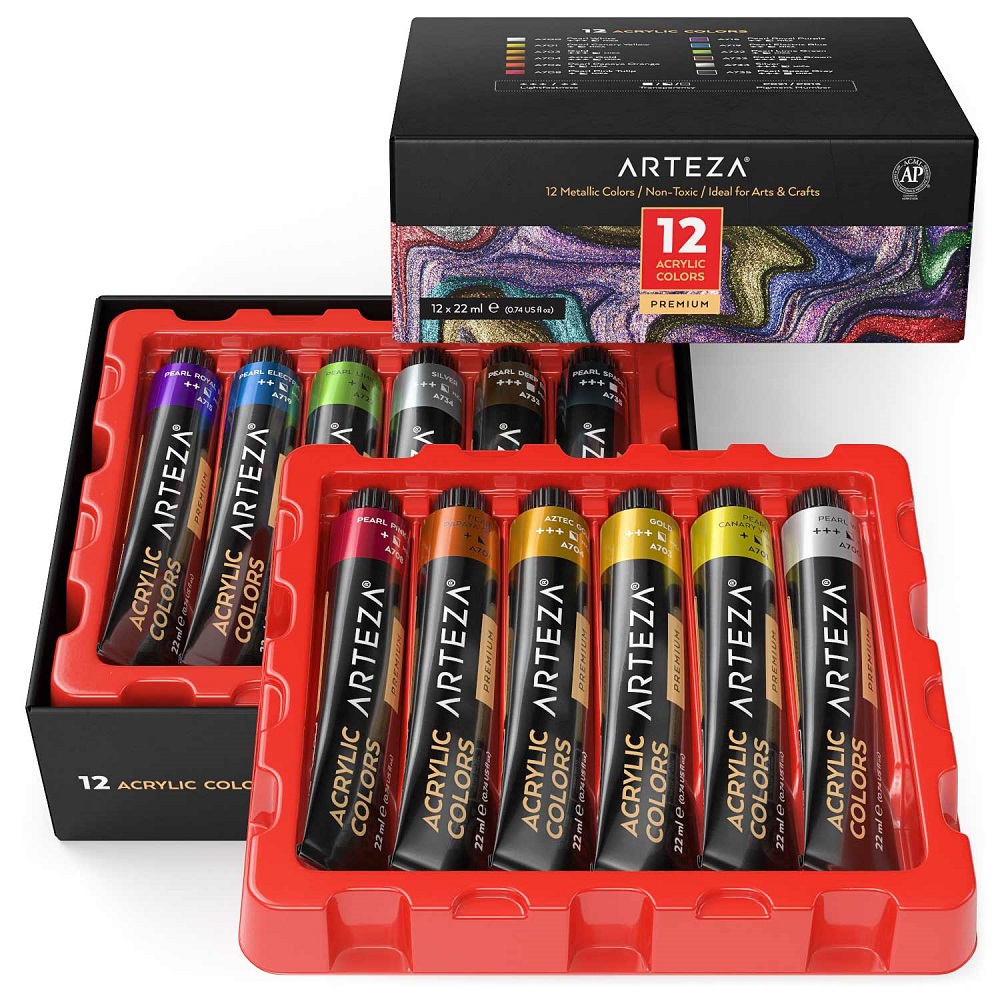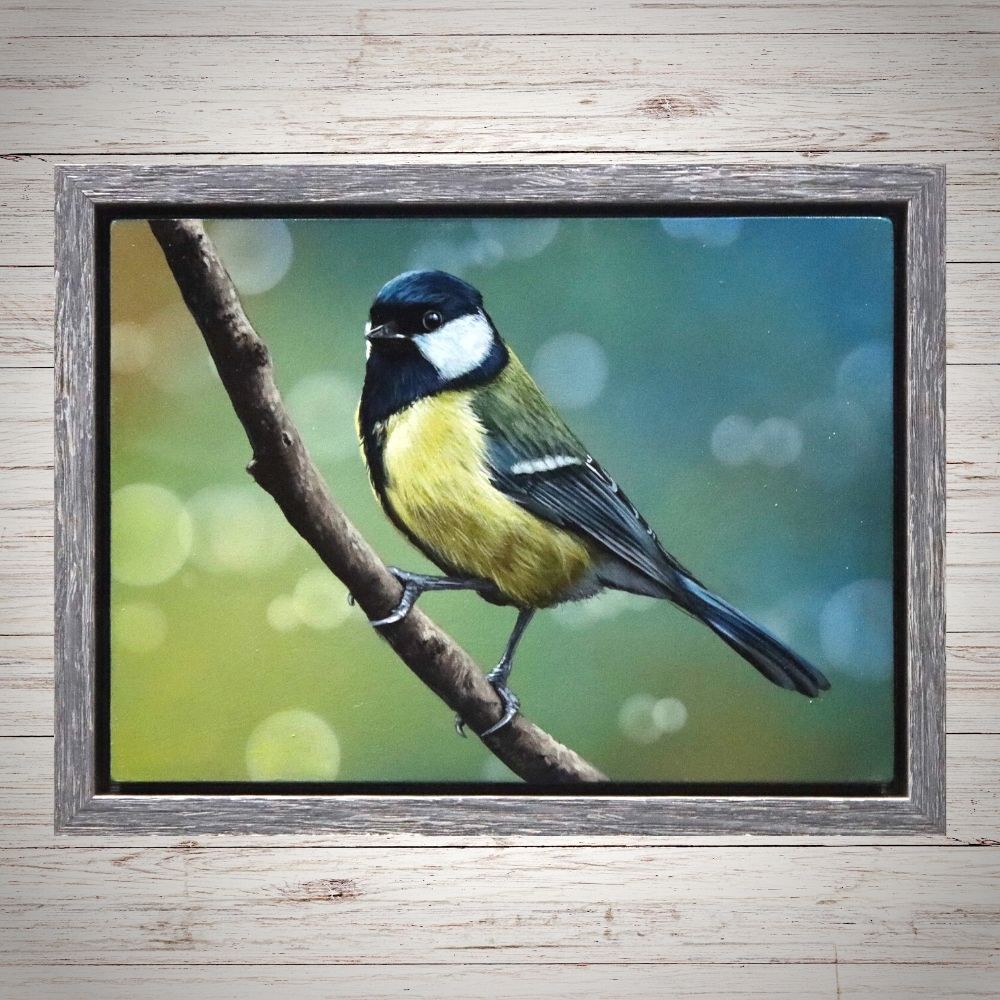The Basics of Acrylic Painting
Acrylic paint offers versatility for artists of all skill levels. It dries quickly and allows for layering and texture creation.
Getting Started with Acrylics
To start with acrylics, you’ll need a canvas or acrylic paper and a variety of brushes. Begin by experimenting with simple techniques like flat washes.
Essential Tools and Materials
For acrylic painting, gather brushes, paints, palette knives, and a mixing palette. High-quality tools can enhance your painting experience.
The Water Technique for Acrylics
Acrylic paints are known for their versatility, and one way to harness this is through the water technique. This method is ideal for beginners who want to explore effects similar to watercolor painting. Adding water to acrylic paint can change the consistency and transparency, offering a spectrum of possibilities for artistic expression.
Thinning Acrylic Paint with Water
Start by experimenting with the amount of water to add. A few drops can slightly loosen the paint, while more water can result in a wash effect. When the paint is thinned, you can apply it in translucent layers, perfect for creating gentle transitions or soft backgrounds. Remember to use a surface that’s suited for this kind of work such as watercolor paper, as standard canvases may not absorb the paint in the same way.
Important tips:
- Mix water and paint slowly to find the right balance.
- Test the mixture on a separate piece to see the final look.
- Use clean water to keep the colors vibrant.
Achieving Watercolor Effects
Once you have mastered thinning the paint with water, you can begin to create watercolor effects. This involves applying lighter washes for the initial layers, then adding depth with more saturated colors. Techniques like glazing or lifting (wiping off paint with a wet brush) can mimic traditional watercolor methods.

Steps for watercolor effects:
- Apply a light wash as the base.
- Layer darker tones for depth and definition.
- Use wet brushes to lift paint for highlights.
- Blend edges while paint is still wet for a seamless look.
By playing with water and acrylics, you can achieve a unique blend of textures and finishes that bring a new level of creativity to your painting projects.
Texturizing with Brushes and Tools
Adding Texture with Stiff Bristles
When using acrylics, texture adds life to your paintings. Grab a stiff-bristle brush to start. Dip it in thick acrylic paint. Then, dab it onto your canvas. This creates a textured, random pattern. Softly tap to form small dots, or apply more pressure for solid areas. It’s perfect for crafting rough surfaces like rocky landscapes.
Creating Patterns with Stippling
Stippling involves making tiny dots with your brush. Use different colors to add depth to your work. This creates textures that seem solid from afar but are actually made up of small dots. To try stippling, just take a pointy brush and gently poke the canvas to form dots. It’s a great way to add detail to objects in your painting.
The Art of Dry Brushing
Dry brushing means using a dry brush on the canvas with little paint. This technique creates a scratchy, textured look. It’s ideal for depicting objects with rough surfaces such as tree bark or gravel. To dry brush, ensure your brush is nearly dry and lightly drag it across the surface. This allows underlying layers to show through, adding complexity to your piece.

Dynamic Painting Methods
Acrylic painting offers transformative techniques that can turn a blank canvas into a mesmerizing piece of art. Exploring dynamic painting methods such as pouring, dripping, and splattering can significantly enhance the complexity and appeal of your artworks. These techniques are not only fun but also allow for a profound expression of creativity.
Acrylic Pouring and Dripping Effects
Acrylic pouring and dripping are exciting ways to create abstract patterns and unique color blends.
- Pouring Technique: Start by mixing acrylic paint with a pouring medium to thin it out. This mixture helps the paint flow freely across the canvas. Choose various colors and pour them onto the canvas from different heights and angles. Tilt the canvas to guide the paint across the surface, creating organic forms and swirls.
- Dripping Technique: For a more controlled effect, use a brush or a spoon to drip paint onto the canvas. Layers of different colors can be dripped over one another to create rich textures and depth. You can also manipulate the direction of the drips by tilting the canvas to weave the colors together.
These techniques can be used to mimic natural phenomena like rain, or even to add an emotional, surreal quality to your painting. Experiment with additives such as silicone oil to create stunning cell-like effects in the paint.
Splattering Paint for Natural Textures
Splattering paint is a playful and dynamic method to add texture and a sense of movement to your paintings.
- Preparation: Thin down your acrylic paint with water to a runny consistency. This makes it easier to splatter.
- Execution: Using a stiff brush or a toothbrush, dip into the paint, pull back on the bristles and release. This action will create a spray of fine droplets across your canvas. The size and distribution of the splatters can be controlled by the force of your flick and the distance from the canvas.
The splattering is great for creating starry skies, sandy beaches, or mimicking the chaotic beauty of splashes or explosions. It’s an excellent technique for abstract paintings or for adding expressive, textural details to more figurative work.
By incorporating these dynamic painting methods into your acrylic toolkit, you can open up a new realm of possibilities, allowing your creativity to flow as freely as your paint.

Techniques for Cleaner Edges and Shapes
Achieving clean lines and shapes can transform a simple painting into a striking piece of art.
Utilizing Painter’s Tape for Sharp Lines
Painter’s tape is a simple tool that allows for precision.
- Place tape where you want straight edges.
- Paint over or next to the tape for perfect lines every time.
- Remove the tape carefully to reveal your clean, crisp lines.
Using this method prevents paint from bleeding and keeps your artwork looking neat.
Employing Lifting to Remove Paint
Lifting is a method to create unique effects by removing paint.
- Dampen a paper towel or a clean brush to lift wet paint gently.
- This technique can create highlights or correct mistakes.
- Lifting works best with a light touch and patience.
Lifting is just like erasing but more gentle; it takes practice but adds versatility to your work.
Detailing and Layering
Detailing and layering are key techniques in acrylic painting that add richness and complexity to your artwork.
Using a Palette Knife for Unique Textures
A palette knife is not just for mixing paint on your palette. It can also be used directly on the canvas to create unique textures and patterns. Here’s how to use a palette knife effectively:
- Use the flat side to spread thick paint for a smooth finish.
- Employ the edge of the knife to create fine lines and sharp textures.
- Experiment with different angles and pressure to achieve diverse effects.
These techniques add dimension and intrigue to your paintings, making them stand out.
Fine Detailing with a Wet Brush
For detailed work, a wet, fine-tipped brush is essential. It allows for precision in your painting. Here are tips for using a wet brush:
- Keep your brush slightly dampened for a sharper tip.
- Use light, steady strokes to maintain control.
- This technique is perfect for adding small highlights or intricate details.
A wet brush can transform the finer points of your painting, giving life to your artwork’s smallest features.
Highlighting and Layering for Depth
Layering and highlighting are vital for achieving depth and realism in acrylic paintings. Follow these steps:
- Begin with darker base layers, letting them dry.
- Gradually add lighter layers to build up the depth.
- Use highlights strategically to draw the viewer’s eye.
These methods help in creating a more dynamic and realistic painting, as they give your work optical volume and interest.
Exploring Color
Color brings your acrylic paintings to life. Understanding how to mix and apply colors is key.
Making a Color Mixing Chart
Having a color mixing chart guides your painting process. Make one by mixing primary colors. Red, yellow, and blue, with black and white, give you a wide range. Label colors on paper with a pen. Mix colors in squares to see the results. Charts help you recall perfect shades for later works.
Utilizing Tones of the Same Color to Enhance Depth
Use different tones of one color to create depth. Lighter tones can highlight areas. Darker ones add shadow and dimension. This method makes simple color palettes striking. Try this with cool blues or warm yellows. Watch as your painting gains a dynamic quality with just a few hues.